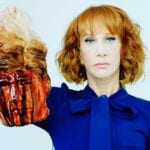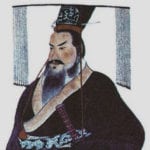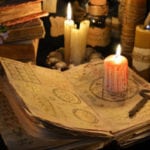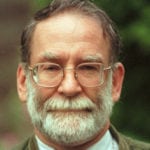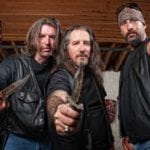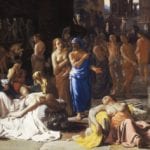 Technology
Technology  Technology
Technology  Humans
Humans 10 Everyday Human Behaviors That Are Actually Survival Instincts
 Animals
Animals 10 Animals That Humiliated and Harmed Historical Leaders
 History
History 10 Most Influential Protests in Modern History
 Creepy
Creepy 10 More Representations of Death from Myth, Legend, and Folktale
 Technology
Technology 10 Scientific Breakthroughs of 2025 That’ll Change Everything
 Our World
Our World 10 Ways Icelandic Culture Makes Other Countries Look Boring
 Misconceptions
Misconceptions 10 Common Misconceptions About the Victorian Era
 Mysteries
Mysteries 10 Strange Unexplained Mysteries of 2025
 Miscellaneous
Miscellaneous 10 of History’s Most Bell-Ringing Finishing Moves
 Technology
Technology Top 10 Everyday Tech Buzzwords That Hide a Darker Past
 Humans
Humans 10 Everyday Human Behaviors That Are Actually Survival Instincts
 Animals
Animals 10 Animals That Humiliated and Harmed Historical Leaders
Who's Behind Listverse?

Jamie Frater
Head Editor
Jamie founded Listverse due to an insatiable desire to share fascinating, obscure, and bizarre facts. He has been a guest speaker on numerous national radio and television stations and is a five time published author.
More About Us History
History 10 Most Influential Protests in Modern History
 Creepy
Creepy 10 More Representations of Death from Myth, Legend, and Folktale
 Technology
Technology 10 Scientific Breakthroughs of 2025 That’ll Change Everything
 Our World
Our World 10 Ways Icelandic Culture Makes Other Countries Look Boring
 Misconceptions
Misconceptions 10 Common Misconceptions About the Victorian Era
 Mysteries
Mysteries 10 Strange Unexplained Mysteries of 2025
 Miscellaneous
Miscellaneous 10 of History’s Most Bell-Ringing Finishing Moves
Top 10 Most Audacious Shootouts in US History
These shootouts are police incidents, as opposed to military battles. I have not ranked them according to body count or fame, but according to the reckless disregard for life inherent in them. The list is long but the reading easy and the added details help to show just how astonishing some of these shootouts really were.
At 6221 Osage Ave., Philadelphia, PA, on May 13, 1985, members of MOVE, a predominantly black organization dedicated to nature, and African tradition, were confronted by the Philadelphia Police Dept., after neighbors complained of MOVE’s constant bullhorn announcements of anti-American sentiment at all hours. In an attempt to clear the building, the police fired tear gas, and the fire dept. hosed the roof with water cannons.
A burst of gunfire erupted from inside the building, and the police responded with thousands of rounds of small arms fire for 90 minutes. They then tried to remove two roof structures by dropping a 4 pound bomb of C-4 and Tovex onto the roof. This started a fire that eventually consumed the entire neighborhood. Eleven members of MOVE died in the fire. Only two survived.
The PPD was sued and forced to pay $1.5 million to a survivor and relatives, due to using excessive force and unlawful search and seizure. I have included this as an astounding example of a police force’s audacity and consequent repercussions, as opposed to the rest of the entries.
On August 7, 1970, in an attempt to free his brother, imprisoned Black Panther leader George Jackson, 17-year old Jonathan Jackson walked right into a courthouse in Marin County, California with an arsenal of weapons, stormed a room where a trial was taking place, and armed defendant James McClain, on trial for murdering a prison guard, and two fellow convicts who were participating in the trial as witnesses, William Christmas and Ruchell Magee. The four armed men then took the judge, a district attorney and three jurors hostage, and marched them out of the courthouse into a waiting getaway van.
As they attempted to flee the scene, a shootout began between the suspects and Marin County Sheriffs deputies providing security at the courthouse. By the end of the gun battle, Jackson, McClain, Christmas, and judge Harold Haley were killed. According to the hostages, Haley was executed by a shotgun blast to his throat. Magee was severely injured, but survived the battle and was sentenced to life in prison. One juror and the D.A. were also wounded. One of the weapons used by Jackson was later traced to Black Panther icon Angela Davis, who was tried, and acquitted, for participation in the crime.
On April 6, 1970, two heavily armed career criminals, Jack Twinning and Bobby Davis, engaged the California Highway Patrol in Newhall, CA. This resulted in the deadliest day in California law enforcement history.
After dark, Davis almost crashed into another car. The occupants confronted him, and he pulled out a handgun. They claimed that the CHP was coming, and he fled. They called the police. Later, having picked up Twinning, they were pulled over by Officers Walt Frago and Robert Gore, rookies.
At first the suspects complied. Davis exited and allowed himself to be frisked. Frago approached the other side of the car carrying a shotgun at “port arms,” stock against his hip and barrel pointed in the air. This was not procedure.
As Frago walked to the Pontiac, Twinning exited the passenger seat and opened fire with a .38 caliber revolver. Before Frago could aim his shotgun at Twinning, he was struck by two .357 magnum rounds and killed. Gore quickly drew his service revolver and returned fire at Twinning, but in doing so lost track of Davis, who was right next to him. While Twinning and Gore exchanged gunfire, Davis pulled a .38 caliber revolver out of his waistband and killed Gore with two shots in the head, point blank.
Shortly after Gore was killed, a second police cruiser containing CHP officers George Alleyn and James Pence arrived on the scene. As soon as it pulled up to the first cruiser, Davis and Twinning opened fire on it with their revolvers, expending all their remaining rounds, and then dove back into their own car for new weapons. Davis pulled out a sawn-off shotgun, while Twining grabbed a semi-automatic Colt 1911 .45 ACP. After firing one shot, Twinning’s .45 jammed, but he simply grabbed another one out of the car and exited out the driver’s side.
As they did this, officer Alleyn emptied his pump 12-ga shotgun at the Pontiac, firing the gun so fast he accidentally ejected a live round in the process. A single pellet from the shotgun struck Twinning in the forehead, but did not penetrate his skull and inflicted only a minor wound.
After expending all his shotgun rounds, Alleyn opened fire on Davis with his .357 magnum, but scored no hits. Davis returned fire with his sawn-off shotgun, striking Alleyn with several rounds of 00 buckshot and inflicting fatal injuries.
At this point, 31-year-old bystander Gary Kness, a former U.S. Marine, intervened. Kness got out of his vehicle and ran over to the fallen officer Alleyn. He tried to drag Alleyn to safety, but was unable to move him. He looked up and saw Davis discard his now-empty sawn-off shotgun and grab the pump shotgun that had been dropped by Frago. Apparently not realizing Frago had never fired the weapon, Davis tried to cycle the action of the shotgun, but since it had not been fired, it was locked on a live round. He accidentally fired the gun into the air, dropped it and grabbed the service revolver out of Frago’s holster.
Meanwhile on the other side of the cruiser, Pence fired all six rounds from his .357 Magnum revolver at Twinning, and missed. Twinning returned fire with his .45, striking Pence in the chest and both legs. Pence fell, trying to reload. At the time, the CHP did not issue their officers speedloaders, forcing Pence to reload one round at a time.
Back on the other side of the cruiser, Kness picked up Alleyn’s discarded shotgun and tried to shoot at Davis, but the gun was empty. As Davis opened fire on him with Frago’s revolver, Kness dropped the shotgun and returned fire with Pence’s service revolver. His shots struck the Pontiac, and a fragment of one bullet lodged into Davis’ chest. However, the shot did not incapacitate Davis, and Kness was out of ammunition.
While this was going on, the wounded Pence was still attempting to reload his revolver. As he did so, he failed to notice Twinning sneak up to the cruiser and around the left side. As he inserted the sixth cartridge and started to close the cylinder of his weapon, Twinning killed Pence with a point-blank shot to the head. Kness ran for cover in a ditch, and both suspects exchanged fire with the officers of a third CHP cruiser, newly arrived, then ran into the darkness with the officers’ weapons. Davis was apprehended at 3:25 AM, after stealing a civilian’s camper and exchanging fire with him. The owner called the police, who tracked down the camper within hours. Davis was out of ammunition and surrendered.
Twinning broke into a house three miles from the first shootout scene, and took the resident hostage. He bragged to the police for several hours of a standoff that he had wasted Frago. Police then stormed the building with teargas, and twinning shot himself. Davis was given the death penalty, but this was commuted in 1972, when the Supreme Court struck down the death penalty. He killed himself in prison, August 16, 2009, at 67.
On October 20, 1981, more than 10 members of the Black Liberation Army attacked the two drivers on an armored truck outside a bank at the Nanuet Mall in Nanuet, New York. At 3:55 PM, the drivers were hit by fully automatic M-16 fire, and handgun fire, one dying instantly, and the other surviving, but almost losing his arm. The robbers stole $1.6 million and fled in a van, to a nearby parking lot where they changed to a U-Haul truck.
Police converged on the mall, and a college student called to report the vehicle change, after which, four police officers stopped the U-Haul and another get-away car, and were immediately engaged by the robbers. One suspect, a woman, pretended to be innocent and convinced the police to lower their guard, whereupon, six men jumped out of the back of the U-Haul with M-16s and body armor, and opened fire.
Two officers were killed, the other two wounded. The last officer to keep fighting, Brian Lennon, was unable to exit his car, and fired his shotgun through his windshield at the robbers, attempting to ram him with the U-Haul. They fled the scene, some on foot, some in their second vehicle, others carjacking a civilian.
They were apprehended over the next 6 years, following an extensive investigation, and all received long prison sentences. The Brinks guard who survived, Joe Trombino, died in the WTC, on September 11, 2001.
George “Babyface” Nelson (pictured dead above) engaged FBI agents in a running gun battle through Barrington, IL, a suburb of Chicago, on November 27, 1934. The events that transpired cemented Nelson’s infamy as a reckless criminal who had no fear of death.
He was driving down the road with his wife and John Chase, an accomplice, in the car, along with several weapons, when he passed a car of FBI agents going the other way. Both parties recognized each other, and Nelson swung his car around, and he and Chase began firing at the FBI who attempted to get away. An astonishing reversal of the normal situation.
The FBI fired back and disabled Nelson’s car with a shot through the radiator. He drove it into a small field, and the FBI drove away and set up an ambush that never came. They then returned, and resumed the firefight with Nelson and Chase in the field.
Two more agents joined the fight, Herman Hollis and Samuel Cowley. Hollis had killed Pretty Boy Floyd a month earlier. The agents stopped their vehicle in a hail of Nelson and Chase’s gunfire and fired back. Nelson was hit in the stomach as his wife fled the scene. She saw the hit, and reported Nelson to sit down on the running board of his car, while Chase continued to shoot.
Nelson then snarled and stood, walked right out from behind his car into the gunfire and screamed at Hollis and Cowley, “I’m gonna kill you sons of bitches!” and opened fire with a .351 semi-automatic rifle, firing so rapidly that it was mistaken for a Thompson submachine gun.
Hollis and Cowley fled in terror, while Chase kept the other two agents pinned down. Cowley turned and fired back, but ran out of ammunition and was gunned down by Nelson. Hollis shot Nelson in both legs with a shotgun, knocking him down.
Nelson proceeded to get to his feet and gun Hollis down, hitting him several times in the head. In all, Nelson was hit 9 times. He, his wife and Chase fled the scene, before the other two agents could return fire. Nelson died that night from his wounds. Chase was captured and went to Alcatraz.
In what is still one of the most indelible mass shootings in U. S. history, Charles Whitman, an ex-Marine who had qualified as a sharpshooter, barricaded himself into the Tower on the campus of the University of Texas at Austin, on August 1, 1966, and opened fire on innocent bystanders for 96 minutes.
He had already killed his mother and wife, and three others on the way up the Tower stairs. He used a scoped Remington 6mm deer rifle, an M-1 carbine, a .35 caliber Remington pump rifle, a .357 magnum revolver, a 9mm Luger, and a sawn-off 12-ga pump shotgun.
He commenced firing at 11:48 am, and indiscriminately killed 11 civilians, and wounded 32 more, before police officers were able to get up to the observation deck and shoot him down.
He shot a pregnant woman through the stomach. This was probably a deliberate attempt to kill the fetus, which succeeded. The mother, Claire Wilson survived. He shot Paul Sonntag, a student, through the mouth, from 400 yards, then shot his fiancée, Claudia Rutt in the chest, as she attempted to drag him behind cover.
Ambulances and even an armored car were employed to rescue pinned-down civilians. An ambulance driver, Morris Hohmann, was shot through the leg.
In true Texas style, civilians in the area ran to their vehicles and brought out their own deer rifles, shotguns, and handguns, and returned fire to the top of the tower, pinning Whitman down well enough for nine officers to get to the top of the building. Ramiro Martinez and Houston McCoy flanked Whitman, and Martinez emptied his revolver at him, wounding him. McCoy then fired two rounds of 12-ga 00 buckshot into the head, neck and left side of Whitman, killing him instantly.
Martinez then grabbed the shotgun from McCoy, ran up to Whitman’s body, and shot him again in the upper left arm, point blank. There is a photo of Whitman’s dead body on Wikipedia. He was subsequently found to have a glioblastoma, a brain tumor that could have caused his erratic mentality, as he had not always been homicidal.
One of the most astounding cases of physical stamina in history occurred on April 11, 1986, in Miami, FL, when the FBI cornered two career robbers, William Matix and Michael Platt. Matix was an ex-Army MP. Platt was ex-Army Special Forces. They were armed with a Ruger Mini-14 5.56mm, a shotgun, and two S&W .357 magnums.
The FBI outnumbered them 4 to 1, but still found itself outgunned as the agents fired 9mms. The FBI began the confrontation by ramming the suspects’ car into a tree. What followed prompted the FBI to change from the 9mm to .40 Sig. Platt fired across Matix’s body at McNeill and Mireles, two agents, hitting Mireles in the forearm. Matix then shot at Grogan and Dove, two more agents, with his .357. Grogan shot Matix in the right forearm. McNeill fired six shots, hitting Matix twice, in the head and neck, and knocking him unconscious.
Platt exited the car and was shot by Dove through the upper right arm. This 9mm round penetrated his right lung, collapsed it, and stopped less than two inches from his heart. His chest cavity filled with 1.3 liters of blood. Platt crossed over the hood of another car and was shot twice more by Dove, in the right thigh and left foot. He took cover by the car and fired his .357 at Risner and Orrantia, two more agents. He fired at Hanlon, Grogan, and Dove, and was hit a fourth time, breaking his forearm. He dropped his gun and was shot a fifth time, the bullet penetrating the right upper arm, armpit, torso, and stopping below the shoulderblade.
Platt shot back, wounding Orrantia and hitting McNeill in the neck, incapacitating him. Dove’s pistol was shot and destroyed. Hanlon fired and was hit in the hand. Platt charged Grogan and Dove’s car, though wounded in the leg, foot, and twice in the chest, and shot Grogan dead through the chest, shot Hanlon in the groin, and killed Dove with two rounds to the head. As he entered their car to get away, Mireles fired five times from a pump shotgun with only one hand, hitting Platt in both feet.
Matix regained consciouness and joined Platt in the car. Mireles fired four more times, hitting neither. Platt attempted to start the car as two police officers arrived. Mireles staggered up to the car and fired six rounds from his .357. The first two missed. The third, fourth, and fifth hit Matix in the face, shattering his cheeks, jawbone, and spinal column. The sixth penetrated Platt’s chest to the spine.
The fight lasted 4 minutes and saw 145 shots fired. 2 agents and the 2 suspects were killed. Only one man, Ronald Risner, emerged unharmed. Neither suspect had any drugs in his system, according to autopsies. Matix was shot 6 times. Platt was shot 12 times. Their feat has been attributed to nothing more than adrenaline and fearlessness.
In what has been called “the boldest attempt at home invasion in modern history,” two Puerto Rican nationalists, Griselio Torresola and Oscar Collazo, attempted to break into the Blair House in Washington D. C., and assassinate sitting U. S. President Harry S Truman, on November 1, 1950.
They were only armed with one handgun each, and yet walked right up to the front door of the Blair House, while Truman was napping upstairs, and opened fire with the guards at the door. Collazo shot a policeman and then engaged with two Secret Service agents armed with handguns. The policeman he shot drew his pistol and joined in, and Collazo was shot twice, in the head and right arm.
Simultaneously, Torresola opened fire on a policeman in a guard booth, Leslie Coffelt, who expected Torresola to ask for directions, as tourists usually did. Torresola shot him three out of four times with a 9mm Luger, and Coffelt collapsed in the booth. Torresola then engaged with Joseph Downs, a White House security officer, who was struck in the hip, and ran to the Blair House basement door, was hit twice more, and collapsed inside the building, slamming the door shut behind him.
Torresola rejoined his compatriot, and shot the same policeman Collazo had wounded, incapacitating him. Collazo was hit in the chest and incapacitated. Torresola ran out of ammunition, and began reloading, left of the Blair House front steps. Coffelt, mortally wounded, staggered out of the booth and shot Torresola in the head from 30 feet, blowing out a chunk of his brain the size of an apricot.
The entire shootout lasted only 40 seconds. Collazo survived and went to prison. Coffelt succumbed to his wounds four hours later. Truman was unharmed, but woke to the sounds of gunfire and went to the window to see. Had the gunmen shot down all the guards outside, they would have had only one Secret Service agent left, behind the front door with a Thompson Submachine gun, with which to contend, before having unimpeded access to Truman upstairs.
On May 9, 1980, five robbers, armed with an assault rifle, shotguns, handguns, hollow-point ammunition and pipe bombs, robbed the Norco, California Security Pacific Bank at 3:40 PM. They stole $20,000 in cash, and were spotted by a teller at a bank across the street. Deputy Glyn Bolasky was the first to arrive. The robbers spotted him and exited the bank, opened fire and blew out his windshield. He reversed into the street and crashed into another car.
The robbers piled into their van as Bolasky returned fire. He was shot in the face, left elbow, both forearms, and left shoulder, before the robbers fled. His cruiser suffered 47 bullet holes. Two more officers arrived and engaged the robbers while evacuating Bolasky. The robbers’ van was stopped at the scene and they opened fire on other officers joining the fight, before commandeering a truck and fleeing down the highway.
They shot at the pursuing police and threw pipe bombs out the back of the truck, destroying 33 police cruisers, as well as civilian cars, and shot down a police helicopter. The robbers were able to pull well ahead of the police and set an ambush. They killed one officer, wounded two more, and pinned the rest down behind their vehicles until another officer arrived with an AR-15 and opened fire. The robbers fled, suffering one fatality. Another of the five was killed in a shootout the next day. The other three were later captured.
On February 28, 1997, Larry Phillips and Emil Matasareanu attempted to rob the North Hollywood Bank of America. Perhaps inspired by the epic shootout scene in the 1995 film “Heat,” they were extremely heavily armed, with 9mm Berettas; fully automatic AK-47s with drum clips, an HK-91, and an AR-15. They wore homemade body armor of Kevlar sewn around steel trauma plates. They took Phenobarbital to calm their nerves, then walked up to the front door of the bank, put on ski masks and entered at about 9:17 AM. They expected to be in and out within 8 minutes, before police could arrive.
Unfortunately for them, a police cruiser with two officers drove by and saw them put on their masks, and radioed in a possible 211 in progress. The robbers began shooting fully automatic rifle fire into the ceiling, forced the vault open and stole $303,305 in cash. They then forced the 30 or so hostages into the vault, and exited the bank, at 9:38, and initiated the most awe-inspiring hailstorm of domestic violence in United States history.
It lasted for 44 minutes, during which 10 officers and 7 civilians were seriously wounded. The police fired 650 rounds of various small-arms ammunition at the robbers. The robbers fired 1,300 rounds in exchange. They used armor-piercing rounds, which penetrated the officers’ cruisers and vests. The officers, however, could not penetrate the robbers’ armor with their .38 revolvers, 9mms, and 12-ga shotguns.
The robbers shot at a helicopter, which refused to leave, and broadcast the entire battle. Matasareanu entered a white four-door sedan, while Phillips opened the door and retrieved additional drum clips, and continued to fire at officers. The police took cover behind their cars, behind buildings and tollbooths. They were so terribly outgunned that many fled the confrontation to nearby gun stores, and requisitioned AR-15s and M-16s, then returned to the fight.
The robbers were hit hundreds of times but continued shooting unabated. Civilians attempted to flee the area and were shot down indiscriminately. Phillips followed his accomplice down a residential street firing in all directions, until he was hit in the left thumb. His HK-91 jammed, and he dropped it, pulled out his 9mm and returned fire at the officers approaching. His 9mm jammed, and as he cleared it, he placed it under his chin and shot himself dead as an officer shot him.
Matasareanu drove on into the neighborhood. He commandeered a civilian pickup truck and almost fled the scene when the SWAT team arrived. He got out and fired fully automatic rifle fire at them through his own windshield. Some of the SWAT team members were unable to penetrate his armor even with M-16s, with rounds bouncing off, but eventually began wounding him in the torso and arms. They also shot under both cars at his feet. This brought him down, and he died of gunshot wounds before an ambulance could reach him.
Miraculously, not one police officer or civilian died. 19 officers were awarded the Medal of Valor, the police equivalent to the military’s Medal of Honor.

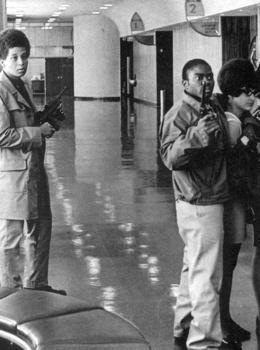
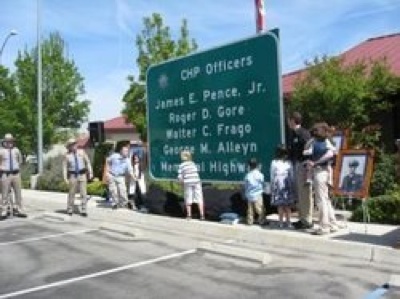
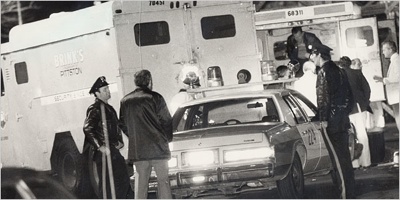
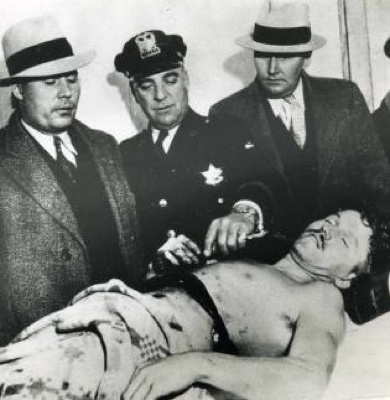
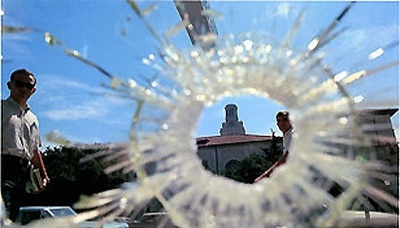
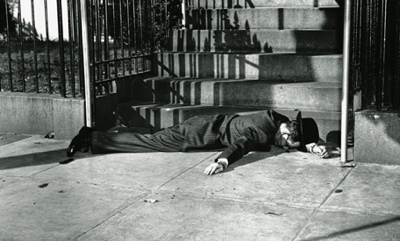

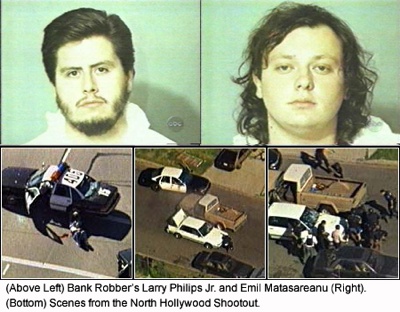
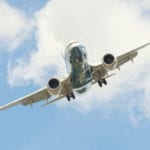
![Top 10 Most Important Nude Scenes In Movie History [Videos] Top 10 Most Important Nude Scenes In Movie History [Videos]](https://listverse.com/wp-content/uploads/2019/09/sharonstone-150x150.jpg)
